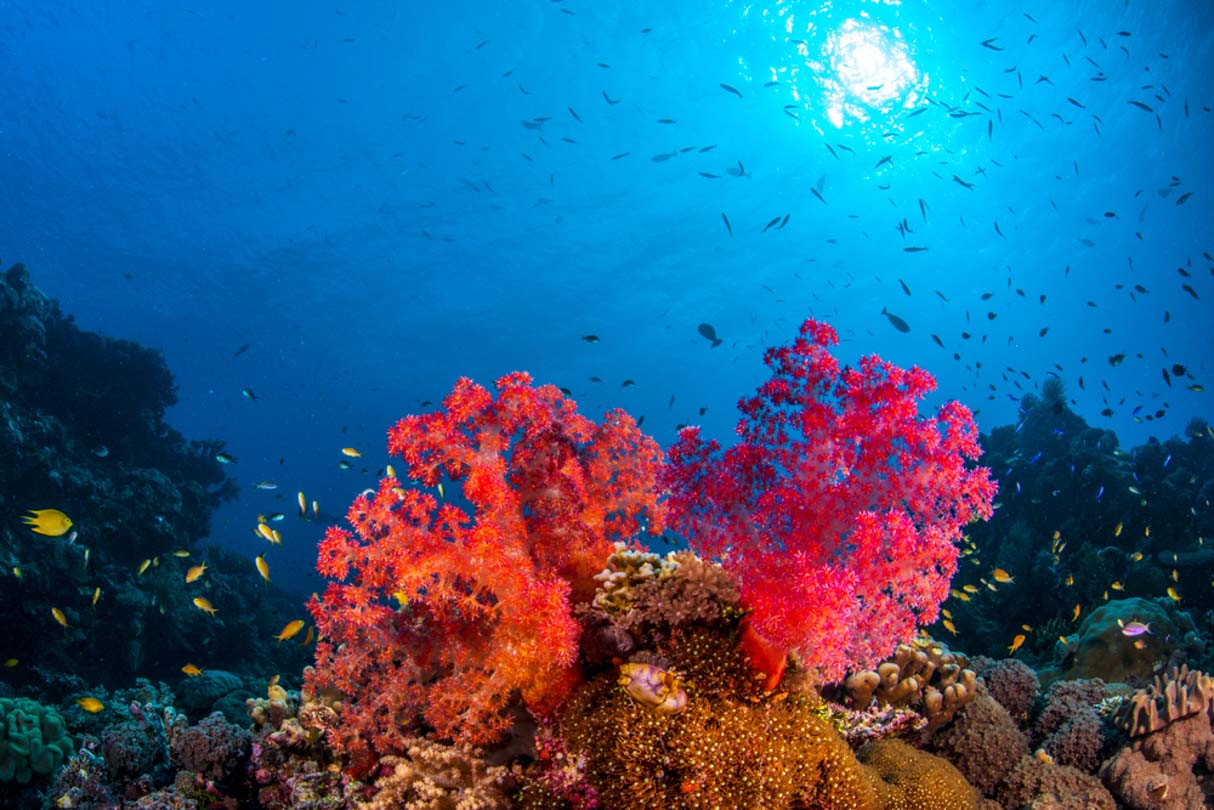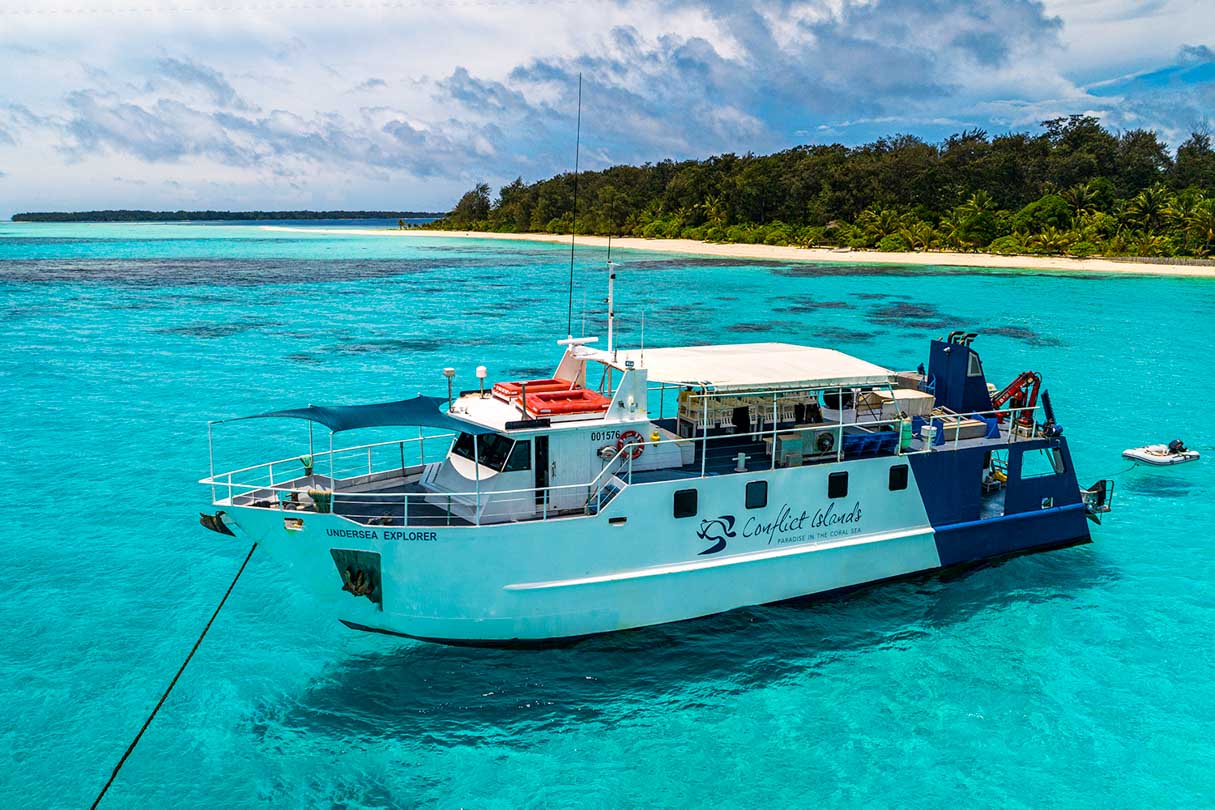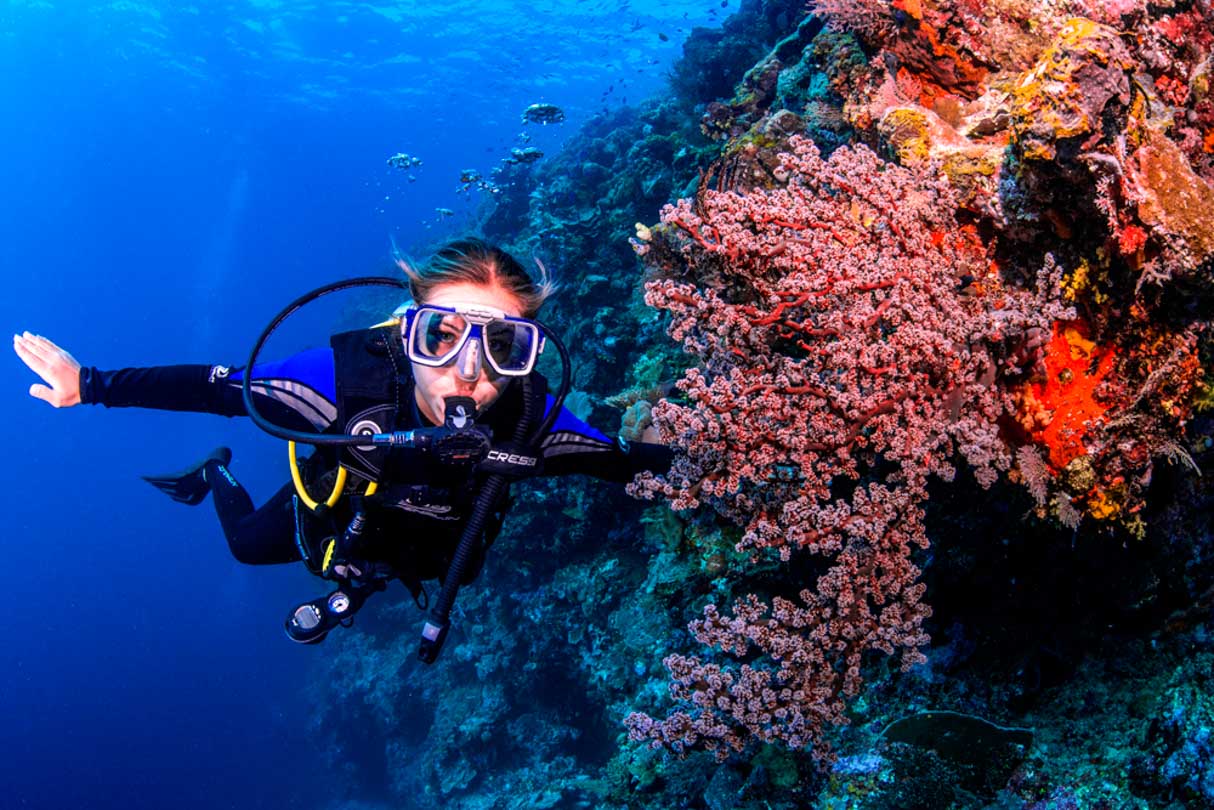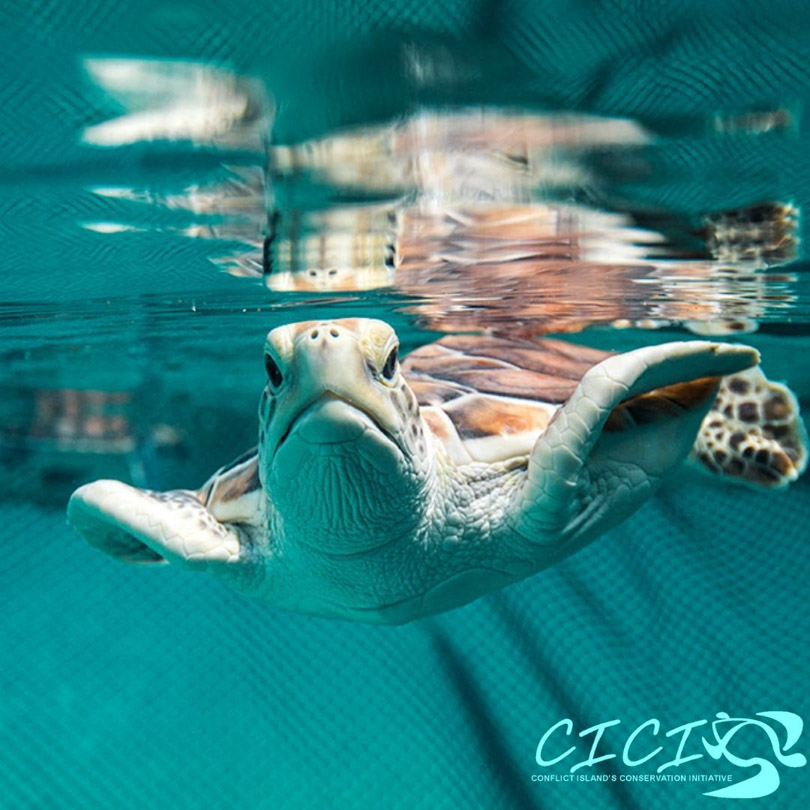DIVE REPORT ON THE CONFLICT ISLANDS,
PAPUA NEW GUINEA
The Conflict Islands, remote AMAZING scuba diving!
This is a report from my diving experience last August in the Conflict Islands, Papua New Guinea.
by Terry Smith

Photo: A beautiful aerial shot of the Conflict Islands. Panasesa Island is in the foreground, with Iral Island on the right.
THE ISLANDS
Located in the pristine waters of The Coral Sea, the Conflict Islands comprise of 21 untouched islands, boasting the most extensive biodiversity & coral reef in the world.
With a third of the world’s species of marine fish, the Conflict Islands are home to everything from the tiny ghost pipefish to huge manta rays & tiger sharks. Among the group of islands that surround a spectacular lagoon is Irai Island. This island was found “second-best coral in the world” with the greatest number of species noted in a single dive. This has led to the acknowledgment of how unique it is by being named a “Hope Spot” by Mission Blue this year.
This an amazing achievement due to the work of the Conflict Islands management & the Conflict Islands Conservation Initiative.

Photo: Soft coral on the Beluga dive site.
GETTING THERE
The stepping-stone to the Conflict Islands & the Milne Bay area is Alotau. This bustling township is around a 1.15hr flight from Port Moresby. The flight takes you up & over a mountain range which can be susceptible to bouts of bad weather, so delays are possible. Upon arrival into Alotau, the airport is small but clean with an area for taxis & transporters. If you are staying at a hotel on the first night, make sure you let them know what flight you’re arriving on so they can meet you at the airport, as transfers are included. I visited several hotels when I was in Alotau & I must recommend the Masurina Lodge. The lodge is located above the town, on the hill, with nice clean appointed rooms, modern, with great security. There is the Alotau International Hotel located on the waterfront but at the time of my visit, it was looking a little dated.
(They have been instances of security in this area over the past few months. This was not the case when I was there. The “Rascals” as they are called have been chased away by a police task force. Each resort and dive operation have their own security. The local community is fed up with these “rascals” and is working against them as well. Staying in the hotel or onboard a liveaboard there is no issue.)
From the airport, we were transferred by a taxi van to the Undersea Explorer's ( the resorts transfer & supply vessel). departure point at the marina. (The infrastructure does need work in this area so expect to take around 30 minutes from the airport to the marina or hotel).
For those that have been in the diving community for several years, you may remember the Undersea Explorer Dive Liveaboard. Built-in the 1990’s she served her time as a marine exploration/ research liveaboard out of Port Douglas. She has since been brought & re-located to the Conflict Islands. Although primarily as a supply vessel servicing the Conflict Islands she has been excellently maintained & refitted every couple of years, with next year her next scheduled refit, in Cairns. (She can be used still as a liveaboard fully set up for scuba diving).
After a 12-hour steam, we awoke to the arrival at Panasesa Island, which at 16Ha, is the second largest of the Conflict Islands, with the resort located on her. We transferred over to the island & meet the manager's Ed Cardwell & Hayley Versace. Both are avid scuba-divers & have been in the industry for several years. The resort is well-appointed with bungalows located on the waterfront & the dive shop close by. There is a communal dining area upstairs in the main building & an air-conditioned lounge area to relax. A beautiful setting.
We were lucky in the sense that the custodian of the islands was also present — Mr. Ian Gowie-Smith, an Australian based in the UK who grew up in Australia. Mr. Gowie-Smith & his family are part of an elaborate plan to create a legacy of protected wilderness’ around the world. With internationally renowned success as a global entrepreneur, Mr. Ian Gowrie-Smith is passionately dedicated to ensuring the centuries’ long protection of the Conflict Islands.

Photo: The Underwater Explorer the supply & dive liveaboard for the Conflict Islands.
THE DIVING
Over the course of two weeks, we visited many sites each as spectacular as each other. They were never any “bad” diving with only one dive with less visibility as the water was running out of the lagoon. The visibility dropped to about 15m in this instance with average visibility on every dive with over 30m. The water was a mild 26 degrees but with dives up to an hour, it started to get a little chilly at the end.
Each site was memorable, but several did stand out.
Nicky’s Fan Club, was one, a drift-dive which saw us drifting into the lagoon between Panaboal & Ginara Islands. It was not very deep, with a maximum of just over 26 meters, but what’s spectacular, is the size & colour of the Gorgonian Sea Fans, each swaying, collecting nutrients from the currents. Such an array of colours & shapes was just such a joy to cruise over, you could hide behind one, then just stare in awe of this site. Truly amazing!
Beluga, off Irai Island, was another amazing site. With a ledge at around 18 meters and then sloping down into the depths it had fish life & colourful soft corals. You could swim up through cracks & around large boulders covered in corals & blankets of Sea Grapes. One such crack had a massive Gorgonian Sea Fan over 6 meters in size touching from side to side. Tuna visited us, as did Turtles.

Photo: Diver enjoying the Coral Gardens dive site.
Ian’s Arch was another site located near Panasesa Island itself, with an arch swim through in shallower water. The clownfish & life in the shallow reef areas were so abundant. I sat & stared at several colonies of clownfish for what felt like hours… (I heard a whale shark visited this site two months after our visit).
But the site which left such an impression on me was the site off Panasesa Island. You follow the wall along to the end of the island reef then come up onto a ledge area that extends around the island itself. You had tuna & barracuda in the depths, then you come up & over onto the ledge, which has coral covering in “lawns”. Soft corals, hard corals all healthy & thriving. It’s such a pleasure to dive here. Turtles swim past (some fly past as they are not used to divers & get scared), all different sizes, with Green Turtles & Hawksbill the most common. The turtles use Panasesa Island & the surrounding islands to lay their eggs in the season from November through to late February
Photo: A video showing clownfish, but if you notice the coral coverage, it shows healthy colourful life.
THE CICI
To help the turtles & the marine environment, the Conflict Islands set up the Conflict Island Turtle Conservation Initiative (CICI). They employ local rangers who go out at night to keep an eye on the nesting turtles. Turtle is still eaten in these islands & although protected they are still taken when nesting, as it’s the easiest time to catch them. The rangers ensure their safety, note where the nests are dug, mark & monitor them to ensure that they hatch safely. If they are in an area susceptible to wash out from the sea, the eggs are relocated to Panasesa Island into special nest areas & closely monitored. When the eggs hatch, they are guided to the water. It any are injured or deformed on birth they are taken to the nursery which is a facility on the island which cares for them until a suitable size, then they are released into the open ocean. This initiative is doing fantastic work!

Photo: A baby turtle rehabilitating in the CICI turtle sanctuary.
HOW TO VISIT
Get out to Milne Bay, the Louisiades & the Conflict Islands, it’s in pristine condition with absolutely, amazing diving. Visiting this area will create the awareness it needs to protect the area for the future.
With well-appointed beachfront bungalows, The Conflict Islands Resort is offering a range of stays into next year.
The Conflict Islands & the Milne Bay area, should not be missed & must be added to any scuba divers bucket list!
For more information on staying at this resort & experiencing amazing diving in this area, visit the Conflict Islands info page for more details or send an email to info@pelagicdovetravel.com



